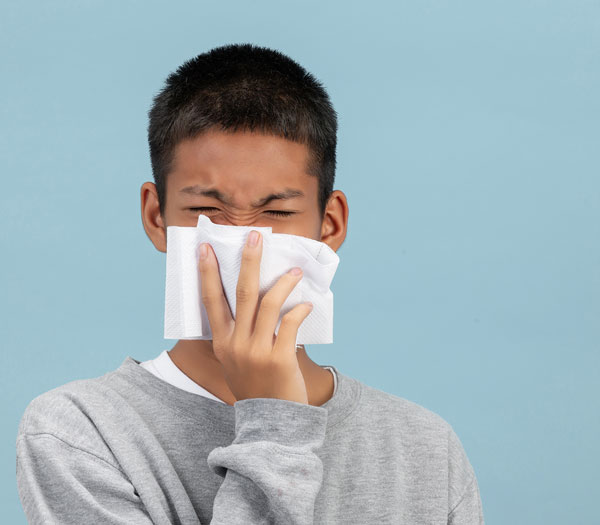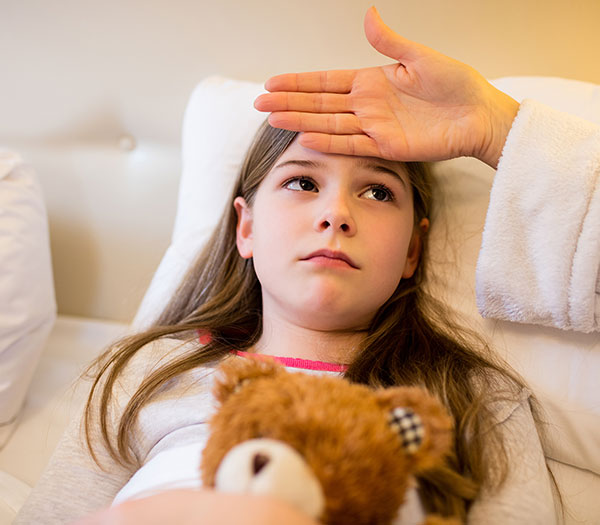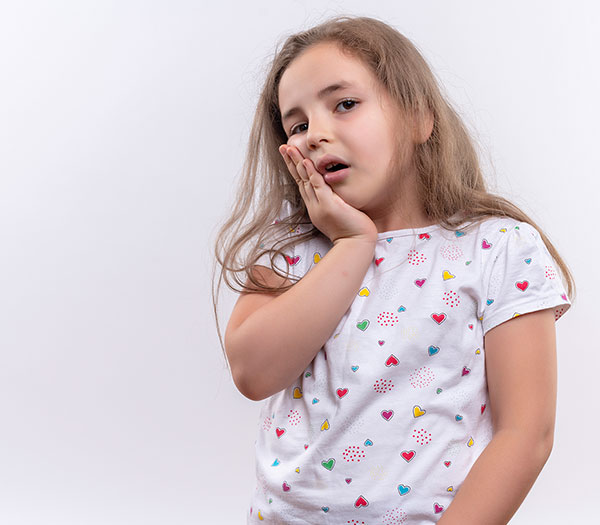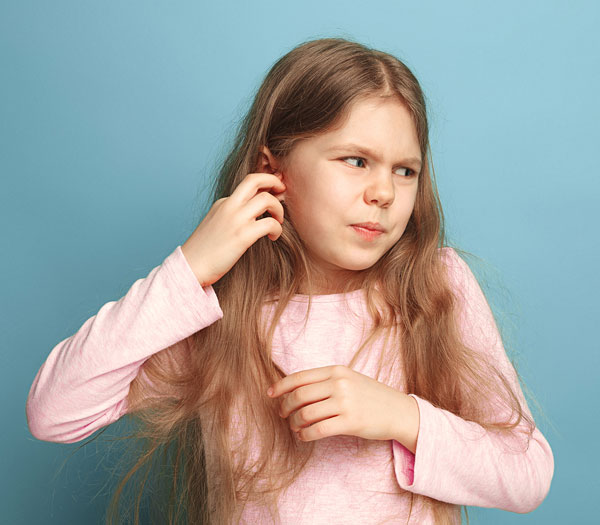Children: Cold & Flu, Fever, Teething, Earache
Cold & Flu
- Cold and flu symptoms can be similar, but they are different infections.
- Colds mainly affect the nose and throat.
- Flu symptoms usually start suddenly with a high fever and tend to make the body ache.
If you are experiencing cold and flu symptoms we encourage you to practice good hygiene (washing hands for 20 seconds with warm water, and cleaning between fingers and under nails) and physical distancing to help slow the spread of germs. If you are experiencing symptoms of fever, coughing, sore throat or shortness of breath you should seek medical advice from a doctor (including pathology testing) and stay at home (not go to school or work). Even though the symptoms for colds and flu can be similar, there are some differences.
Signs and symptoms of colds and flu
| FLU | COLD |
|---|---|
| Fever | A blocked or runny nose |
| Chills | A sore throat |
| Headaches | Headaches |
| Body aches | Muscle aches |
| Dry cough | Cough |
| A sore throat | Sneezing |
| A runny nose | A raised temperature (occasionally) |
| Feeling very weak and tired |
How to relieve the symptoms of colds and flu?
There are several ways you can help relieve cold and flu symptoms, including:
- Keep warm
- Get rest and sleep
- Take acetaminophen (paracetamol) to lower your temperature and to relieve any pains and/or aches
- Drink enough water
- To relieve a sore throat, gargle warm salty water
What to avoid?
To avoid catching a cold or flu practice good hygiene and avoid close contact with someone who is showing symptoms. Try not to touch your eyes or nose or mouth, as these are entry points for infections. Don’t share towels, or household items like glasses or mugs.
If you’re exhibiting symptoms, you should see a doctor. When it comes to colds and flu, healthcare professionals recommend you steer clear of antibiotics, as they do not relieve symptoms, nor speed up recovery. They are only effective against bacterial infections, not viral infections such as colds and flu.

Fever
- Temperature higher than 38°C is considered a fever
- Fever is a normal response to illnesses
- Controlling the rise in temperature is important
Fever is a common symptom of bacterial and viral infections. Examples include infections that cause colds and flu. In addition to high temperature, fever often causes symptoms like sweating, shivering, chattering teeth, headache, flushed skin, aching muscles, dizziness and general weakness. Sickness isn’t always the reason you get a fever. Fever can also be caused by reactions to medicines or immunisations, or certain medical conditions.
There are practical ways to reduce a fever
To help relieve the discomfort of fever:
- Get plenty of rest
- Drink lots of water, to stay well hydrated
- Stay cool by wearing light clothes and sleeping with light bedclothes
- Keep the room at a comfortable temperature
- You could take a fever reducing medicine such as
- Take acetaminophen (paracetamol) to lower temperature
Seek urgent medical attention:
- Children under 3 months of age with a fever
- A person of any age with a fever, headache and stiff neck, or has rash that doesn’t blanche (fade) when pressed
- A person of any age with a fever who also experiences unexpected or unusual symptoms like hallucinations, muscle spasms or feels confused or drowsy
Children over 3 months of age, including adults who experience:
- trouble breathing
- drowsiness
- refusing to drink and/or not urinating as often
- stiff neck
- sensitivity to light
- ongoing vomiting or diarrhoea
- looking sicker than before – more pale, lethargic or weak
- any other symptoms that are causing you worry.
Or if you or someone you are caring for:
- still has a fever after three days
- are shivering or shaking uncontrollably
- are hot but not sweating
- are getting sicker instead of feeling better
- have recently travelled overseas.

Teething and Earache
- Most common reported problem in children
- Acetaminophen (paracetamol) the best pain relief option for Teething and Earache
Teething usually begins around 6 months of age. But it is normal for teething to start at any time between 3 months and 12 months of age. It is a process in which the first set of teeth, called primary teeth or milk teeth, erupt and break through the gums. Teething symptoms may begin about 3 to 5 days before a tooth breaks the skin, causing pain and discomfort to the child.
Earache is a common problem, particularly in children. A earache can be sharp and piercing, or dull and aching. There are many possible causes for an earache such as sinus infections, earwax, tonsillitis, and teeth grinding. But the most common ear infection is acute otitis media, or a middle ear infection, and is characterised by swollen and infected portions of the middle ear.


